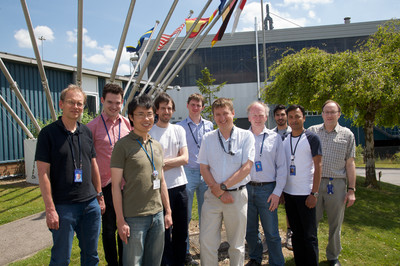The µSR technique is currently only available at four facilities, including ISIS, but demand is such that another four are being discussed.
Although the ISIS muon facility is 30 years old, the review committee found that ISIS will, "remain a key µSR player in the future." They put this down to a combination of a "superior suite of instruments" and "an expert muon support group which is internationally recognised." The facility supports a diverse research programme, traditionally based on magnetism, superconductivity, physical chemistry and semiconductor materials, but increasingly in more applied areas such as energy materials and cultural heritage.
In energy materials, the ability of muons to measure Li and Na ion diffusion coeffcients has led to advances in understanding of battery materials. Japanese industry giant Toyota are using the facility in their research. The government's Faraday Challenge initiative provides an opportunity to extend this further. In addition, recent insights into the mechanisms behind hydrogen storage have significant promise for future industrial research.
The report makes some recommendations for improvement, including detector development to increase the muon detection efficiency, improvements to the time resolution and the development of new techniques, particularly elemental analysis with negative muons. More widely, the committee noted that the proximity of the muon facility to neutron and photon sources has led to an increased scientific impact from ISIS, but that this could be built upon further.
The committee felt that ISIS is, "the ideal source where you can push the possibilities of high-data-rate muon science", and that proposed development of a Super-MuSR instrument was a highly compelling case that would "bring clear science benefits".
The report concluded that the facility is "likely to maintain its international scientific relevance for the forseeable future", with a high quality science programme that makes it an integral part of the ISIS Neutron and Muon Source. However, there was a note of caution that to maintain this position will require "strong committment from the ISIS management and... continuing efforts from the muon group to develop cutting-edge technology alongside strong in-house and user-based scientific programmes."
Dr Adrian Hillier leads the muon group. He says "I am delighted with the comments from the review committee and would like to thank them for the time they took to carry out the review. It confirms the importance of both the ISIS muon facility and the µSR technique to the international scientific community and gives clear guidance on what we can do to maintain and enhance that status."

The ISIS Muon Scientists (from Left to Right): Steve Cottrell, David Wilkinson, Koji Yokoyama, Matteo Aramini, Peter Baker, Adrian Hillier, James Lord, Adam Berlie, Pabitra Biswas and Francis Pratt. Mark Telling is also part of the group.
